LG OLED65E8PLA review – in pictures
The OLED pace-setter returns - only this time, it’s bringing an assistant
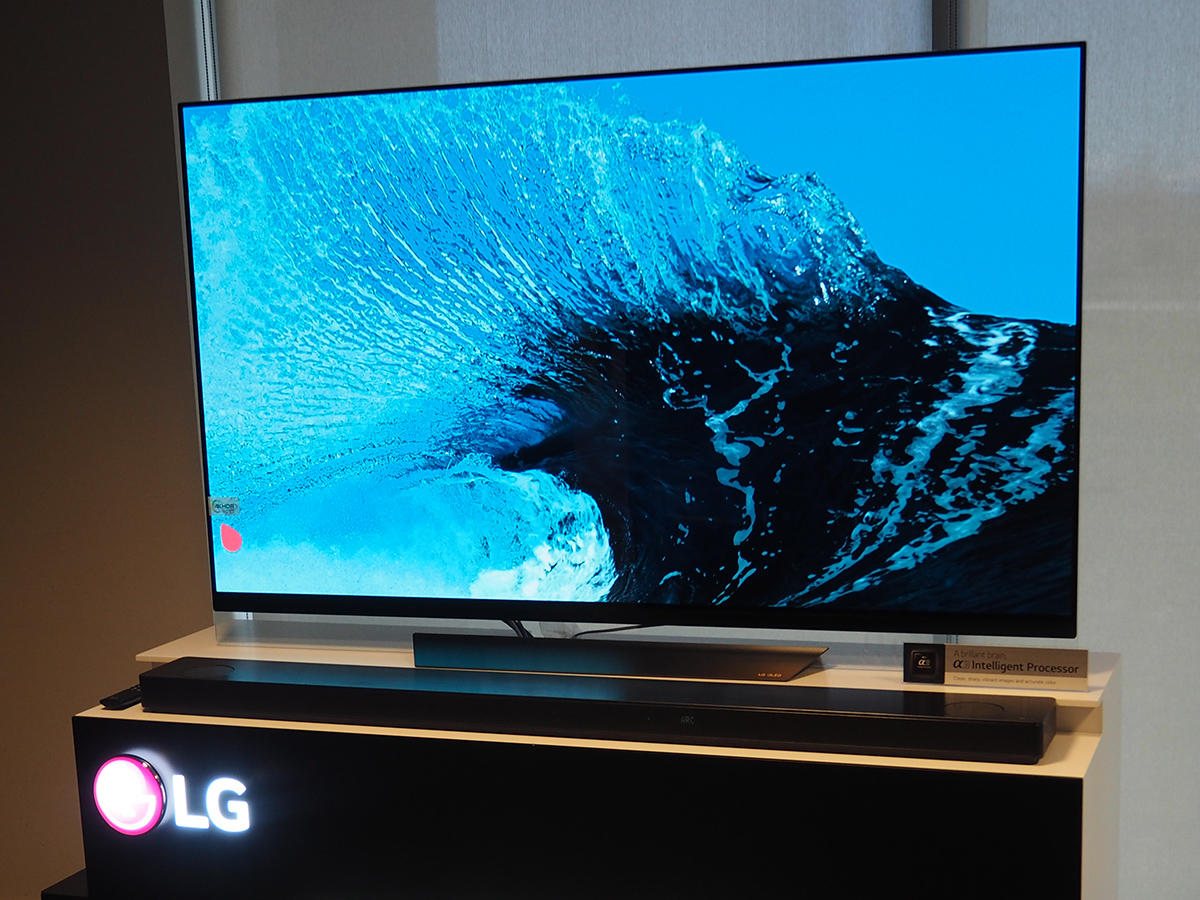
SOUNDS OF LIFE
LG’s OLED TV line up is sort of unique, in that the panel and much of the core specifications are the same for the E8 as they are for the C8 below it, and the W8 two series above it (the B8 is the only odd one out, as it doesn’t feature the new Alpha 9 processor). Instead, what separates them is design and how they handle sound. And it’s those upgrades that you’ll pay the extra for with every series jump you make. The E8 comes in 55in and 65in variants. We’ve tested the 65in version here, but it’s worth noting that this is actually the highest ranging LG OLED you can get in 55in – both the G8 and W8 ranges start from 65in.
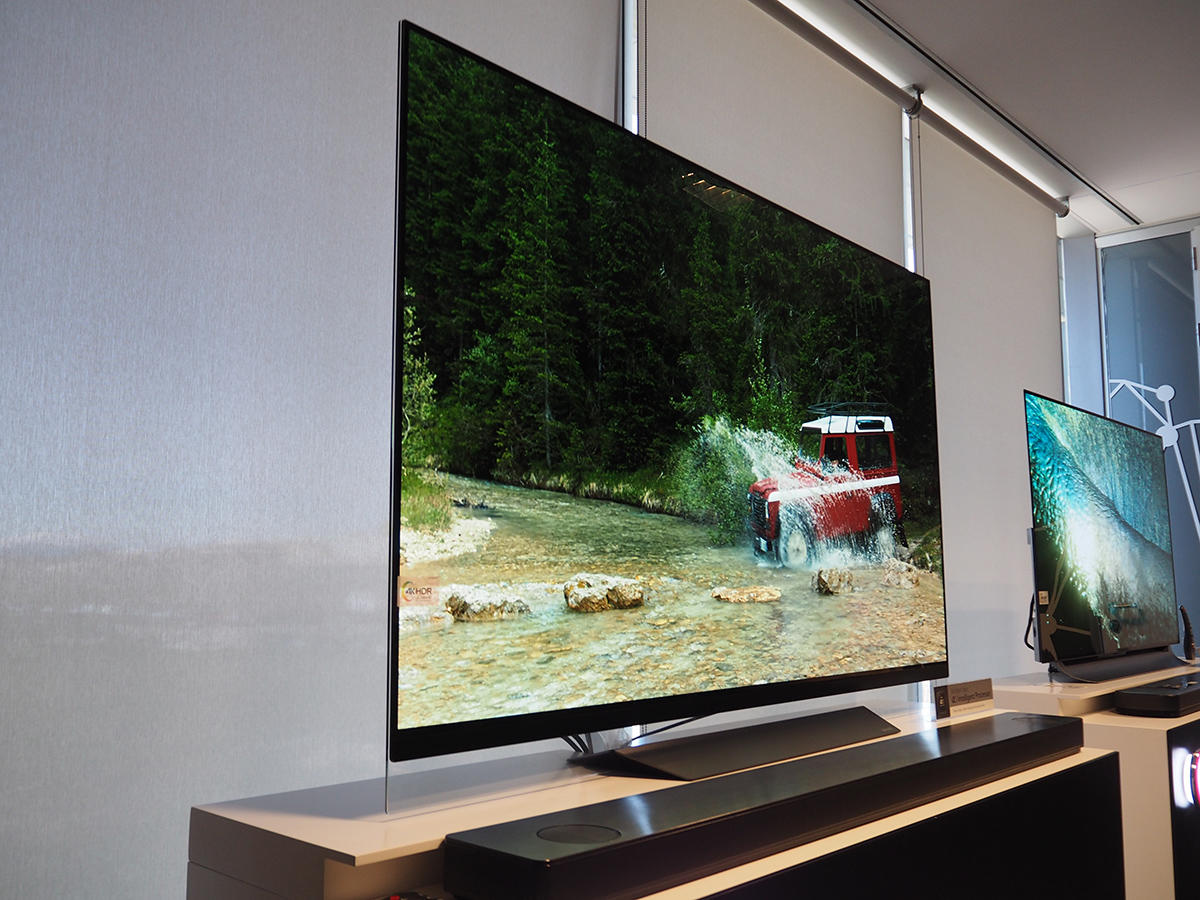
TWEAKED UP
So, what sets apart the E8 from the rest of the range? Well, it opts for a built-in front-firing speaker to handle sound, rather than the soundbar setup of its predecessor, which sits almost undetectable underneath the screen. It’s also the first TV in the range to feature LG’s ‘picture-on-glass’ design, which sees a piece of glass extending from the bottom of the TV and slotting into the set’s sloping wedge-shaped ‘alpine stand’. This makes it look like the TV is sort of floating in mid-air, which is pretty neat, and makes for an elegant, classy design. It’s really easy to get setup too – just slot the screen into the stand (with a satisfying – if slightly unnerving – click), tighten four screws and you’re ready to go.
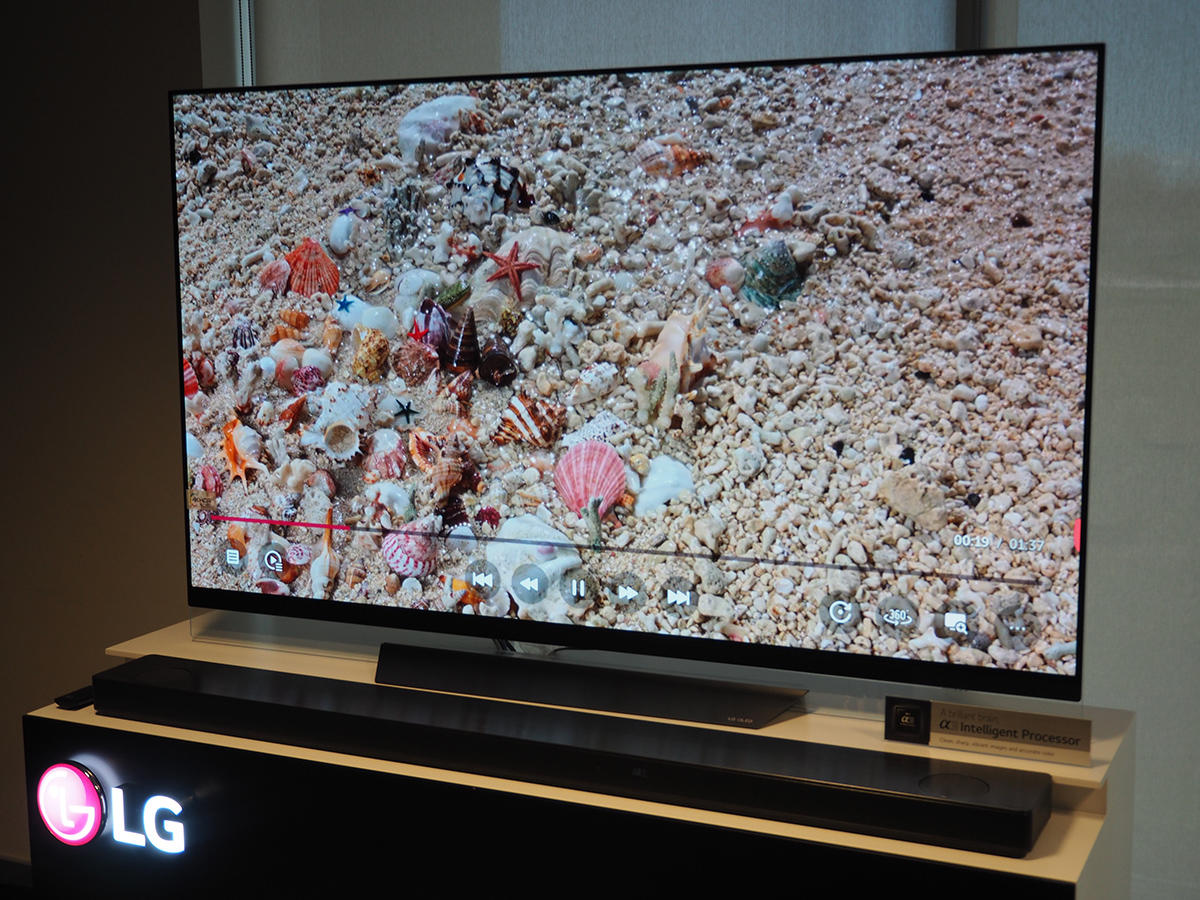
VISUAL UPGRADE
If you loved LG’s OLED picture performance last year, you’re in for a treat. This year it’s been turned all the way up to 11. That’s because, despite not having any panel improvements, the powerful new Alpha 9 processor is really doing its bit behind the scenes to ensure it creates a real difference to the content you’re watching. The top-line boasts of the Alpha 9 include four-step noise reduction – twice as much as traditional TV processors – improved sharpness and seven times the colour accuracy of last year’s range. There’s also support for high-frame-rate video, up to 120fps, for super smooth and seriously realistic moving images.
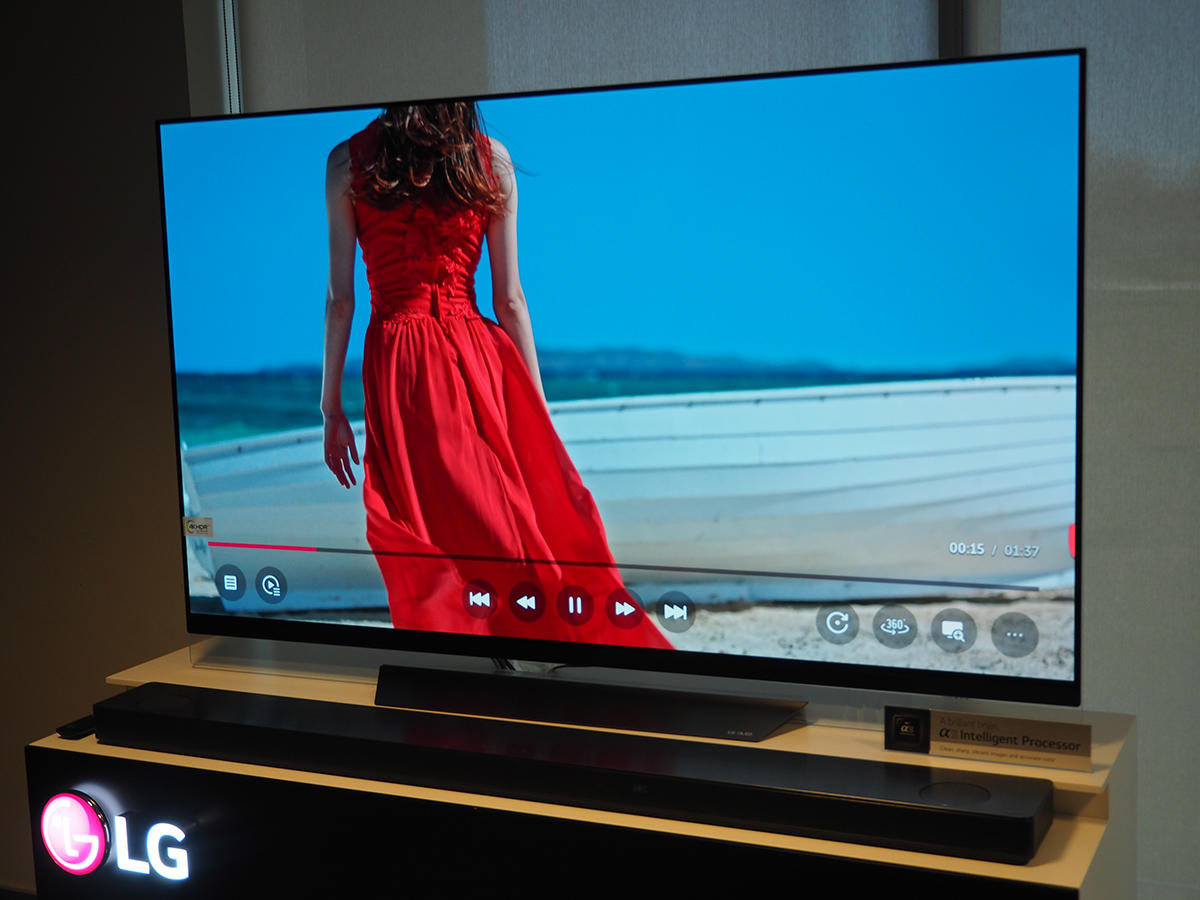
QUICK THINKQ-ER
If uprated picture processing is the E8’s headliner, then AI is the support act. LG’s proprietary WebOS interface – now in its fourth year – remains well stocked with all the apps that count, and is a delight to navigate. But with its new added smarts, you’re going to be doing a lot more with your voice now. Press the mic on the included Magic Wand Remote and you can issue a host of commands, to which the software should become more responsive over time. Ask the E8 to bring up Wi-Fi configuration steps, for example, or show you London’s presumably bang average forecast for the weekend. It’s responsive, accurate and makes flicking through menus a thing of the past. Furthermore, Alexa and Google Home are also supported by the E8, as is LG’s own ThinQ ecosystem, for controlling other LG ThinQ devices. It’s going to keep improving over time, of course, but out of the box it is a very smart cookie indeed.
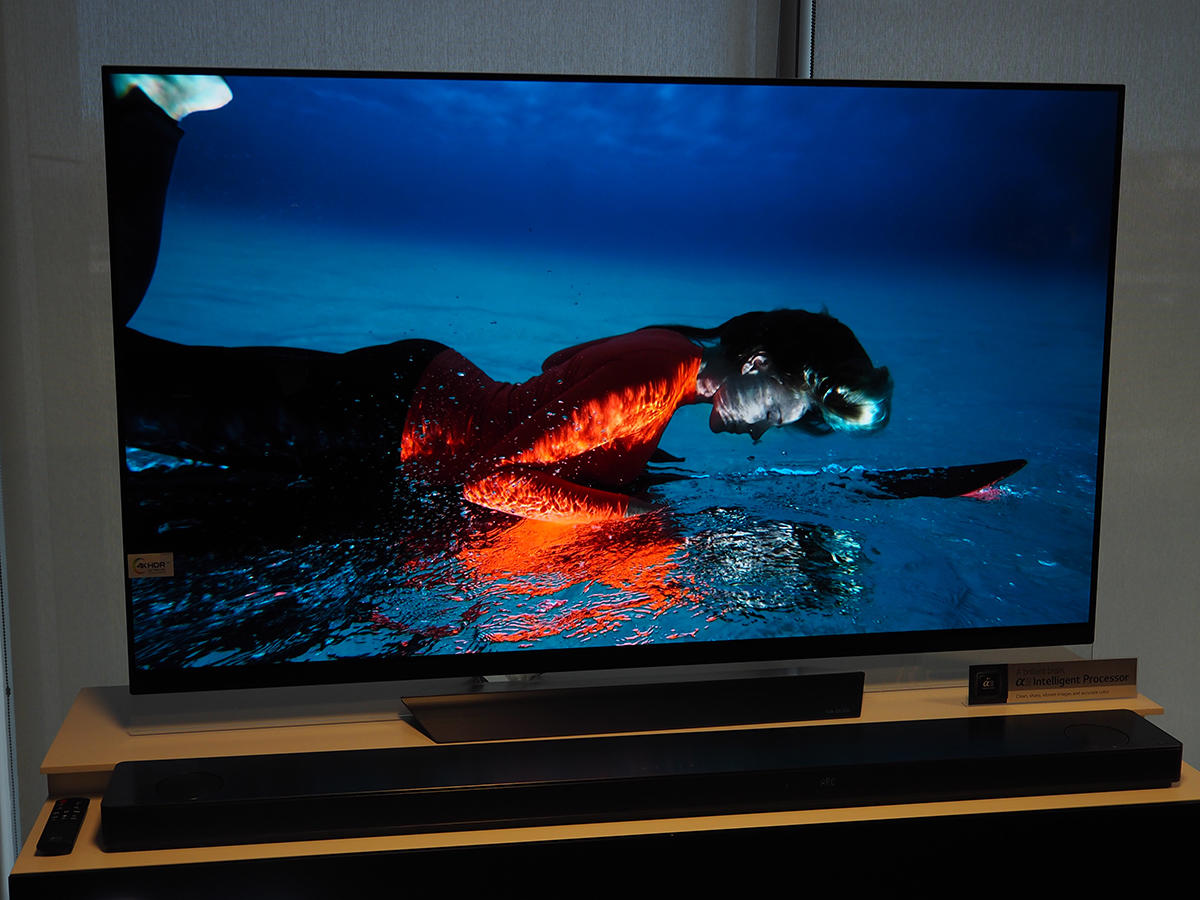
SOUNDS BETTER ON PAPER
If there is one area that lets the side down on the E8, it’s the audio. The good bits are good – it’s a clear, direct sound and it steers away from ever sounding harsh. For basic telly watching, it should certainly suffice. However, it lacks any notion of fine detail, space or depth for more involved watching. The lack of power and bass is just not going to hit the spot for large action scenes, and it’s not as explicit with dynamics as something more talented would be either. Like the rest of the range, the E8’s audio set up supports Dolby Atmos. While you might get a very subtle sense of height that you wouldn’t from a standard speaker, it’s far from obvious, and certainly not the engaging Atmos experience you can now get in the home. Ultimately it’ll make do while you save up for something better, but with a picture this good, you’re going to want a sound good enough to do it justice. The on-board speakers can’t manage that
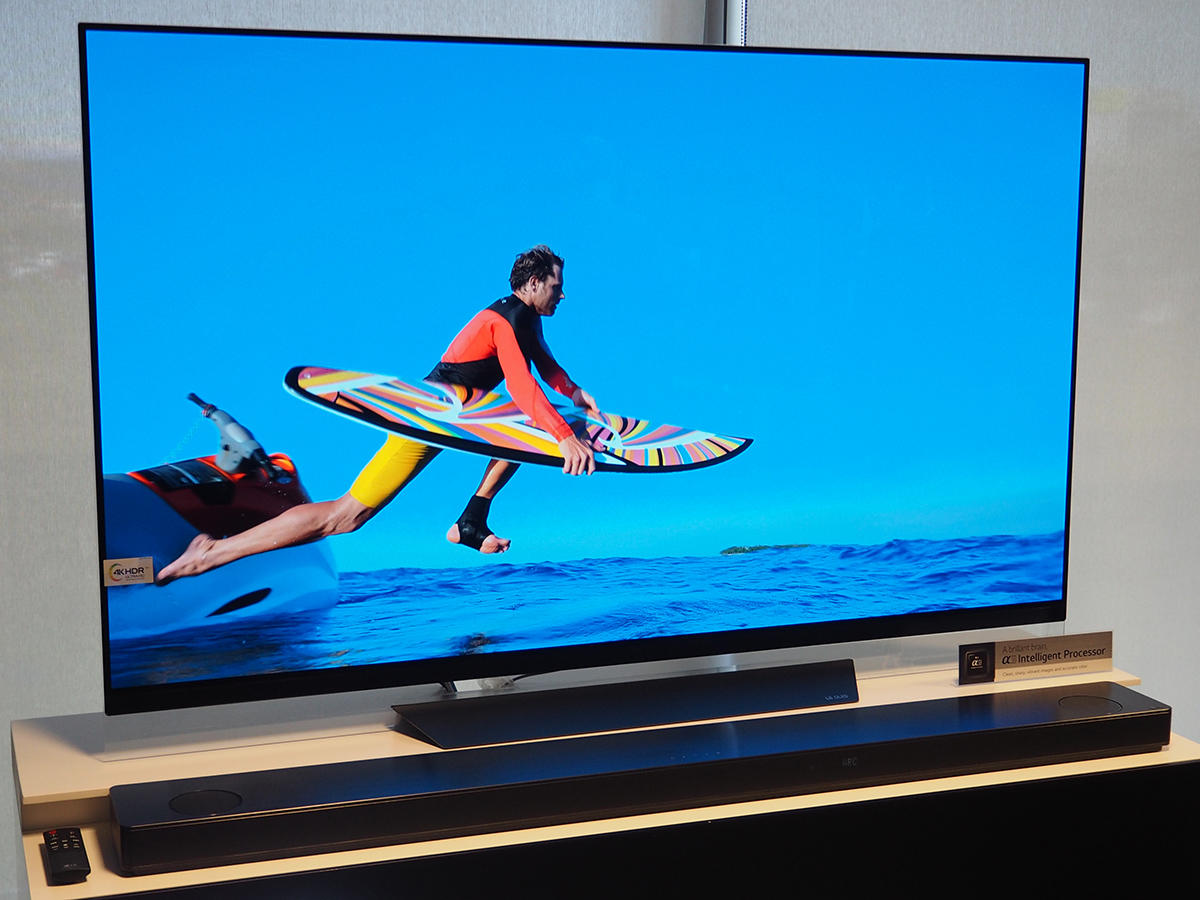
THE PRICE ISN’T RIGHT
LG had a good foundation from which to start their 2018 OLED range, but the company has raised the bar even further than we expected when it comes to OLED picture quality. Everywhere you look, there are small but noticeable improvements, all of which come together to make your telly watching even more enjoyable than before. The problem is that price. It’s around $500 more than the C8 below it, with only aesthetical differences and a slightly more accomplished sound to show for it. And the latter is unlikely to stop you wanting to invest in something better in the near future.


